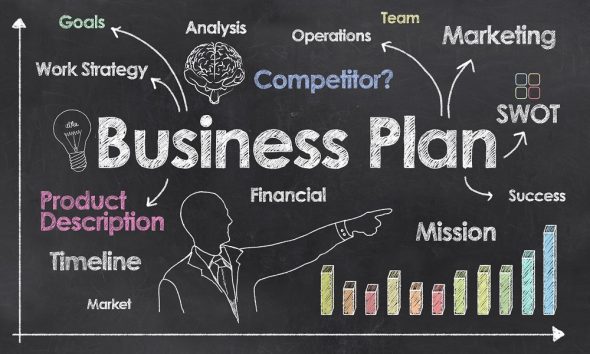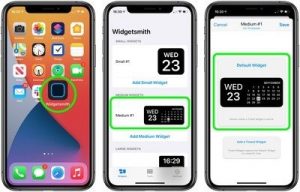
The basis of any company is your business strategy. Using a business plan template, you may learn how to develop a business plan fast and efficiently.
A Good Business Plan Helps Sell your Business
A good business plan will walk you through each step of beginning and running a company. Your business plan will serve as a road map for how to establish, run, and grow your new company. It’s a method of considering the most important aspects of your company.
Company plans can assist you in obtaining funds and attracting new business partners. Investors want to know they’ll get a good return on their money. Your business plan will be the instrument you use to persuade others that working with you — or investing in your firm — is a wise investment.
Pick A Format that Works
There is no one-size-fits-all approach to writing a business strategy. What matters is that your plan fits your requirements.
The majority of business strategies are classified as either traditional or lean startup.
Traditional business plans are more prevalent; they follow a regular format and urge you to go into great depth in each department. They usually necessitate more work up front and can go into the hundreds of pages.
Although lean startup company plans are less popular, they follow a similar format. They concentrate on outlining only the most relevant aspects of your plan’s major features. They can be made in as little as an hour and are usually only one page long.
Traditional Business Plan
This strategy is more thorough, takes longer to write, and is more comprehensive. This plan is frequently requested by lenders and investors.
Lean Startup Plan
This plan has a high-level focus, is quick to write, and only contains critical aspects. More information may be requested by some lenders and investors.
Traditional Business Plan Format
If you’re particularly detail-oriented, want a complete plan, or plan to seek funding from traditional sources, you might prefer a typical business plan structure.
You are not have to follow the identical business plan outline when writing your business plan. Instead, focus on the portions that are most relevant to your business and needs. These nine sections are used in traditional business plans in some combination.
Executive Summary
Briefly describe your company and why it will be successful to your reader. Include your company’s mission statement, product or service, as well as basic information about the leadership team, personnel, and location. If you intend to seek funding, you should also contain financial facts and high-level growth objectives.
Company Description
Provide thorough information about your company in your company description. Go into great depth regarding the issues that your company solves. Make a list of the customers, organizations, or enterprises that your company intends to service.
Describe the competitive advantages that will help your company succeed. Do you have any experts on your team? Have you discovered the ideal location for your business? This is the section of your company description where you can brag about your accomplishments.
Market Analysis
You’ll need a solid grasp on your industry’s prospects and target market. Competitive research will reveal what other companies are up to and what their strengths are. Look for trends and themes in your market research. What are the strategies used by successful competitors? What makes it so effective? Is it possible for you to do it better? Now is the moment to respond to these inquiries.
Organization and Management
Tell your reader how your business will be run and who will be in charge.
Describe your company’s legal structure. Indicate whether you’ve formed or intend to form a C or S corporation, a general or limited partnership, or whether you’re a sole proprietor or a limited liability company (LLC).
Use an organizational chart to show who in your company is in charge of what. Demonstrate how each person’s unique experience will contribute to the venture’s success. Consider incorporating essential members of your team’s resumes and CVs.
Service and Product Line
Describe the products or services you provide. Describe how it helps your consumers and how the product lifecycle works. Share your intellectual property strategies, such as copyright or patent filings. Explain in detail what you’re doing for your service or product’s research and development.
Read Also: How to Set up a New Google Account
Marketing and Sales
There is no one-size-fits-all approach to marketing. Your plan should vary and evolve to meet your specific requirements.
This section’s purpose is to discuss how you’ll attract and keep customers. You’ll also explain how the sale will take place. Make sure to thoroughly discuss your complete marketing and sales tactics in this part because you’ll refer to it later when making financial estimates.
Funding Request
This is where you’ll lay down your financial requirements if you’re seeking funding. Your goal is to make it crystal apparent how much money you’ll need over the next five years and what you’ll do with it.
Indicate if you’d prefer loan or equity, the terms you’d like to apply, and the duration of your request. Give a clear account of how you intend to use your finances. Indicate whether you require funding to purchase equipment or supplies, pay staff, or cover certain expenses until revenue grows. Always include a description of your long-term financial goals, such as debt repayment or the sale of your company.
Financial Projections
Financial predictions should be included in your grant proposal. Your goal is to persuade the reader that your company is stable and will be profitable.
Include income statements, balance sheets, and cash flow statements for the last three to five years if your company is already formed. If you have any other assets that could be used as collateral for a loan, make sure to include them now.
Describe your financial forecast for the next five years. Include income statements, balance sheets, cash flow statements, and capital expenditure budgets that have been predicted. Be even more explicit in the first year, using quarterly — or even monthly — estimates. Make sure your estimates are well-explained and that they correspond to your financial demands.
This is a wonderful spot to use graphs and charts to explain your company’s financial narrative.
Appendix
Provide supporting documents or other items that were specifically asked in your appendix. Credit histories, resumes, product photos, letters of reference, licenses, permits, patents, legal documents, and other contracts are all common items to add.
Example Traditional Business Plan
Read the following sample business plans prepared by fictional business owners before you start writing your own. Andrew owns a toy company, and Rebecca operates a consulting firm.
Lean Startup Format
If you want to explain or start your firm quickly, your business is reasonably straightforward, or you want to alter and refine your business plan on a regular basis, you might prefer the lean startup style.
Lean startup formats are diagrams that summarize your company’s value proposition, infrastructure, customers, and money using only a few pieces. They’re helpful for illustrating tradeoffs and basic corporate information.
A lean startup template can be created in a variety of ways. You may obtain free business plan templates by searching the internet. Here are the nine elements of a model business plan:
Key Partnerships
Make a list of the other businesses or services you’ll need to manage your company. Consider strategic partners such as suppliers, manufacturers, subcontractors, and others.
Key Activities
List the ways in which your company will acquire a competitive edge. Consider selling directly to consumers or use technology to participate in the sharing economy.
Key Resources
List any resources you’ll use to add value to your customer’s experience. Staff, capital, and intellectual property may be among your most valuable assets. Remember to take use of any business assistance offered to women, veterans, Native Americans, and HUBZone enterprises.
Value Proposition
Make a clear and persuasive statement about your company’s unique value to the market.
Customer Relationships
Explain how your customers will interact with your company. Is it a machine or a person? Is it better to meet in person or go online? Consider the customer experience from beginning to end.
Customer Segments
When naming your target market, be specific. Because your firm will not be for everyone, it’s critical to have a clear idea of who it will serve.
Channels
Make a list of the most critical ways you’ll communicate with your clients. Most organizations employ a combination of channels, which they refine over time.
Cost Structure
Will your organization prioritize cost-cutting or value-adding? Define your plan, and then make a list of the most significant expenditures associated with pursuing it.
Revenue Streams
Describe how your business will generate revenue. Direct sales, membership fees, and the sale of advertising space are just a few examples. List all of your company’s revenue streams if you have more than one.
Example Lean Business Plan
Read this sample business plan produced by a fictional business owner, Andrew, who owns a toy company, before you develop your own.






1 thought on “How to Write the Perfect Business Plan”